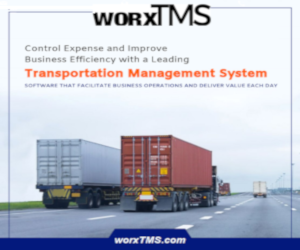Whether it's raw materials or popular holiday products, your primary objective is to get goods to your customers exactly when and where they need them. Here's how to manage your inbound transportation process.
1. Control inventory carrying costs. To stay competitive and run a successful inbound operation, be mindful of your inventory carrying costs. Avoid storing items for long periods of time and properly manage warehouse space to ensure you balance having enough to handle your inventory, while avoiding having too much empty or underutilized space.
2. Gain visibility into your operations. Tips 1 and 2 go hand in hand—when it comes to controlling your costs, you need visibility into your operation, and as much visibility as you can get. Visibility is key to knowing where the redundancies, congestion, and waste are. If you don't already have the level of visibility you require, begin to research and identify software providers that can meet your needs.
3. Maintain vendor relationships. Strong partnerships are critical to your fluidity. It's important to recognize each of them contributes and plays an important function in your inbound transportation strategy. A good vendor relationship requires the following: Be courteous, pay on time, and establish clear expectations.
4. Invest money and time in technology. Don't just invest monetarily in technology; also invest your time. Pay attention to trends and research how others use various platforms to increase efficiencies and digitize operations. Look for technologies that are set up to talk to each other internally as well as externally. The supply chain works better when connected. Don't invest in a technology that creates a silo that is unable to share with others.
5. Collaborate with your partners. Sharing information and engaging with your supply chain partners allows for the best ideas to surface.
6. Keep up on current events. Stay up on world news, especially in regions where you source raw materials or have a trade lane. It is important to know before your competitors about any external threats that might be headed your way. Closely monitoring this type of information enables you to take proactive steps to curate a short- or long-term solution.
7. Organize products and processes. An absolute must with inbound transportation is a well-organized process. Organize and store inventory logs, transportation options, physical storage, and returns/exchange documentation—ideally electronically.
8. Streamline internal and external communications. All aspects of your team—from sourcing staff to vendor partners to transportation providers to the receiving team—must be kept connected and up to speed with the correct information at all times. Simplify the process so that it is easy and convenient to communicate, whether at your desk or on the road.
9. Expect the unexpected. It will happen. Maybe not this month or this year, but crises hit when we least expect it, so we better be prepared. Hurricanes, a clogged Suez Canal, or an invasive insect destroying a crop—your supply chain is often under attack from various angles. Don't fall into the trap of thinking it won't happen to you.
10. Carry more buffer stock. Our current situation has taught us that we need to build more buffer stock into our operations in order for the supply chain to remain fluid. Just-in-time philosophies must be coupled with just-in-case options. Of course, there are benefits to running a lean operation that eliminates unnecessary fat, but one that operates too close to the bone often lacks the flexibility and agility necessary to survive.



